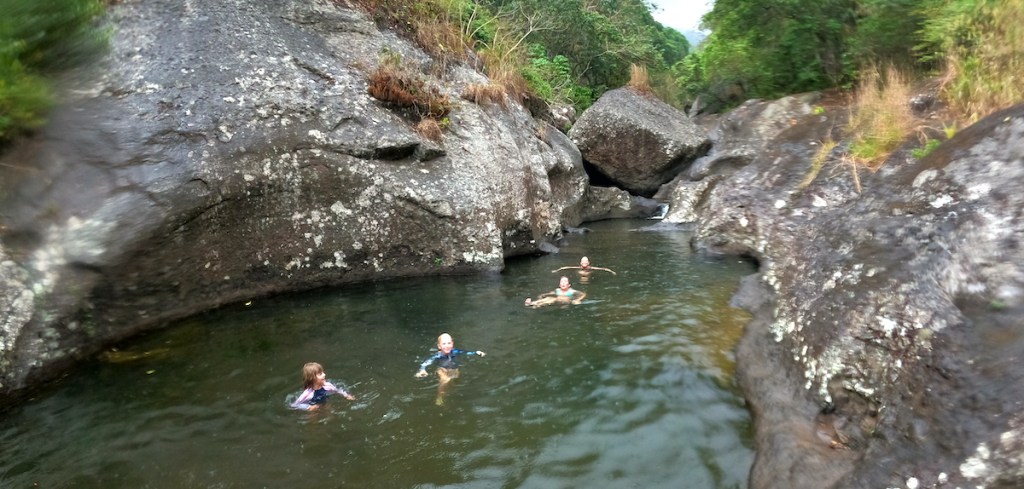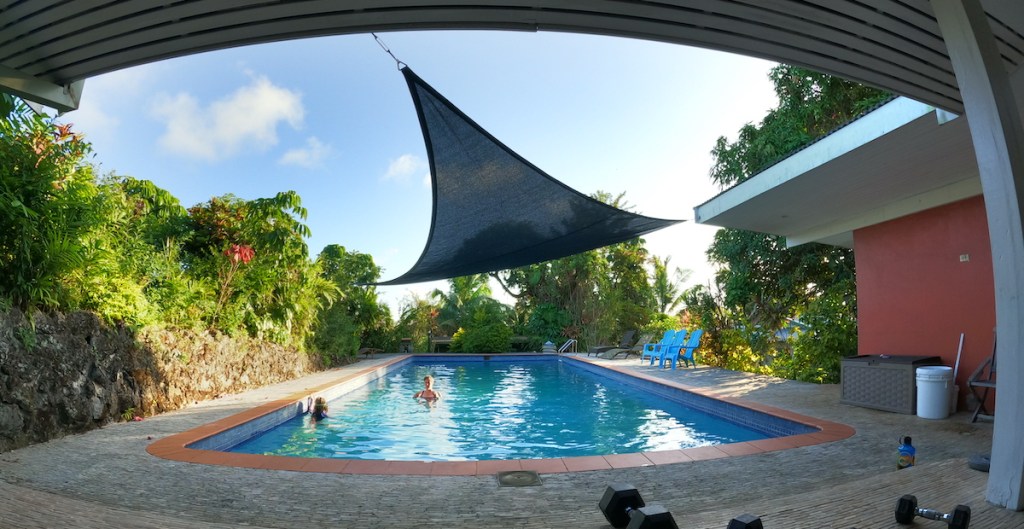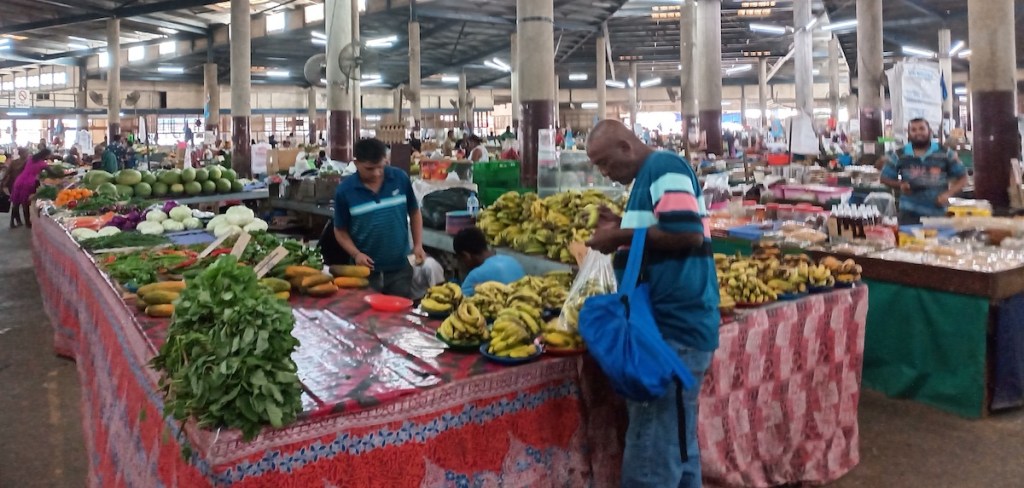We’ve arrived! We picked up a mooring outside Vuda marina, where a couple of officials came out to check our boat papers before we were allowed in to the quarantine dock in the marina itself. There we were met by two ladies who handled immigration, customs and biosecurity. They took our remaining fresh fruit, our defrosted meat (the freezer couldn’t handle the heat of being next to the hot engine for 4 days), our honey, and stamped our passports. We’re in!
The marina staff gave us frangipani flower garlands and sung a wonderful welcome song. Time for a celebratory beer!
We rented a car for a few days so we could explore the main island of Viti Levu before heading out sailing again.
Day 1
Headed up into the hills with Adelle and Sierra to find some waterfalls. An exciting off road trip in a not-offroad car, into the clouds. Hundreds of flame trees around with bright orange flowers. Smell of burning and smoke; lots of fires burning around the countryside, keeping the brush down; this is what we could smell as we approached from offshore.

Day 2 – Sunday 12th Sept
First stop, Garden of the Sleeping Giant … an orchid nursery and tropical gardens where we wandered around for an hour or so, soaking up the sounds, shapes and colours of the Fijian bush.
Next up, the main town of Nadi (pronounced Nandi) where we stopped in at the impressive Hindu temple. The colours, impressive paintings, shrines of Ganesh, Shiva and general uniqueness seemed to make a strong impression on Tilly. We spent some time over the next few days looking up more about hinduism – great learning! Lunch at Nadi was a yummy curry. Lots of Indian influence here, but being a Sunday most of the shops were shut.

We continued around the south – the Coral Coast – to Sigatoka, staying at a small budget resort for the night. It happened to be “entertainment night”, with dancers and fire poi. An interesting change from boat travel, seeing how “normal” tourists see Fiji. We all joined in and got up on stage for some dancing. There was a pool at the resort which Tilly loved, and she made friends with another girl who was visiting from Australia. We also met a local family enjoying a weekend away from home; he worked on a dive boat and she was a masseuse for a resort.
Day 3
Onwards east along the coast to the Sigatoka Sand Dunes – even though it was first thing in the morning, it was too hot for us to take Tilly on the full dune walk (she was pretty tired from the previous day playing and swimming) but we managed a small loop through the woods and along the beach, where over the years people had built lots of driftwood tipis.

Then onwards to Suva, a few hours drive through countryside that got more and more lush as we headed east and south to the windward side of the island. Tilly had a good sleep in the car.
Suva (the capital of Fiji) is a decent sized town, with lots of traffic and noise. We had a good wander about. Picked up some fabric for a bag we wanted to get made [for Tilly’s birthday lego], which we dropped off at a tailor lady in the back of the huge fruit and veg market. Then headed back to the old colonial hotel on the hill where we were staying, for a swim in the “oldest pool in Fiji” – supposedly 100 years old.

Day 4
Back to Vuda! A long 4/5 hour drive back along the coast to the marina, stopping to pick up provisions for our next few weeks sailing around the islands, and a coffee at a handicrafts centre. We happened to bump into the Fijian family we’d met at the resort, and their little boy wanted to give Tilly a turtle necklace as a “welcome to Fiji” gift.
They say that the people of Fiji are some of the most welcoming anywhere in the world, and it’s probably true. There’s no pretence or ulterior motive; just huge smiles and a happy “Bula!” wherever you go. Even in the main towns, it doesn’t seem busy or overpopulated, and almost no sign of true poverty.
It was an interesting few days; exploring nature, towns and getting a feel for the “inland” parts of the island. Roadside villages by mangroves, with houses on stilts. Sugar cane plantations. The biggest produce market I’ve ever seen. Hundreds of kids in Suva at school closing time, climbing onto open-sided buses for their ride back home.
Day 5
We were back on Songline in Vuda marina for the night…. then a quick trip to Lautoka town where there’s another market, this time to stock up on fresh stuff before we head off sailing again. Rose also needed a filling replacing, which she managed at a local dentist for a fraction of the price we’d get in the UK!
